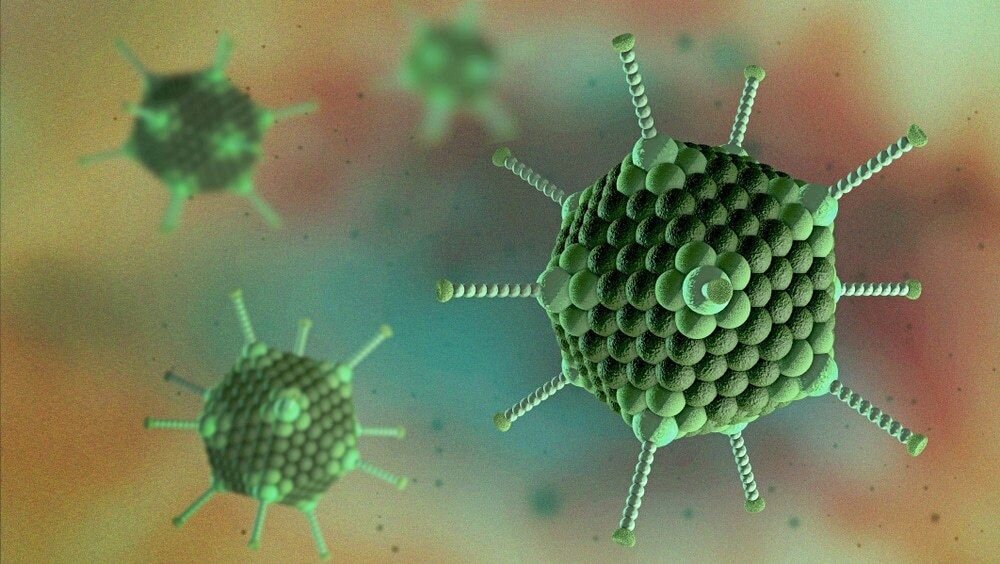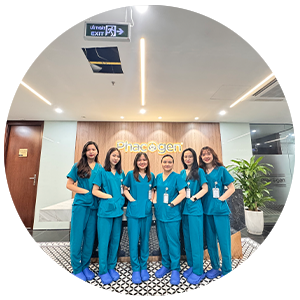Ademo virus (Adenovirus) is an agent that causes many different and common diseases in the world. In Vietnam, recently, information about Adeno and related diseases, especially cases of diseases in people with poor resistance such as young children, the elderly, and people with chronic diseases, are receiving attention and concern.
Let's join Phacogen Technology Institute to discuss with Dr. Le Thi Hoi - Doctor of Biotechnology, Greifswald University, Germany, who has more than 20 years of experience in research, training, and teaching in the field of Microbiology to find Understand Adenovirus from a professional perspective.
.
WHAT IS ADENOVIRUS?
Adenovirus was first discovered in 1953 by a team of scientists Wallace P. Rowe and Robert J. Huebner from the Adenotonsillar or Adenoid tonsils and human tonsils; From then on this virus was named Adenovirus. Adenoviruses belong to the Adenoviridae family and are divided into two main groups: those that cause disease in birds (Aviadenovirus) and those that cause disease in mammals (Mastadenovirus).
.
Adenoviruses that cause disease in humans are divided into 7 groups with symbols from A to G including 54 different types based on research on physiological characteristics and molecular biology. Depending on each person's condition, Adenovirus can cause illness with symptoms ranging from mild to severe. Adenovirus is often dangerous for people with poor resistance, especially the elderly, children and people with underlying medical conditions.
.

.
Adenovirus is a non-enveloped virus whose genetic material is straight, double-stranded DNA. The capsid of Adenovirus has a symmetrical tetrahedral shape with a special structure including pentagonal and hexagonal capsomeres characteristic of the virus. Adenoviruses are 70 - 80 mm in diameter with a DNA size of about 40 kilobases, protein fibers like antennas attached to pentagonal capsomeres, giving the virus a "satellite" appearance.
.
METHODS AND TRANSMITTED DISEASES CAUSED BY ADENOVIRUS
Adenovirus is transmitted directly between people: through droplets when coughing or sneezing; Mucosal transmission: due to swimming or water containing fluid from the eyes, nose, throat or feces of infected patients. In addition, this virus can be transmitted indirectly: through contact with patient belongings infected with Adenovirus.
.
When infected through the respiratory tract (fluids from the patient's nose, mouth, etc.), it can cause diseases such as:
+ Acute respiratory infection: infected people have symptoms of pharyngitis, sore throat, cough, painful swollen lymph nodes, and high fever. The illness usually lasts 3-4 days.
+ Acute pharyngitis: often found in infants and young children with symptoms such as sore throat, cough, fever, runny nose. The illness usually lasts 7 - 14 days.
+ Conjunctivitis pharyngitis: In addition to symptoms such as acute pharyngitis, the patient has symptoms of red eyes and clear fluid discharge.
+ Pneumonia: the patient has a sudden high fever, cough, runny nose, signs of damage to the lungs and can spread, leaving dangerous sequelae. The mortality rate is up to 8-10%.
+ Infection through the digestive and urinary tract: if you eat or drink food contaminated with feces (waste) of a sick person. Symptoms may begin 3-10 days after exposure to the disease source. Symptoms typically occur in children under 5 years of age and may last 1 to 2 weeks.
+ Gastritis, enteritis: common in young children, with symptoms of diarrhea lasting 7 days, fever, headache, nausea, conjunctivitis. Viruses cause disease in the digestive tract and are eliminated through defecation.
+ Cystitis
.
– Conjunctivitis: the patient has red conjunctiva, maybe one side or both sides, clear discharge, itching and sensitivity to light.
.
In addition, Adenovirus also causes a number of neurological diseases, meningitis, genital ulcers... In recent times, it has been discovered that most children have hepatitis due to Adenovirus infection.
.
TREATMENT
Treatment of Adenovirus infection is symptomatic and supportive. Currently, no antiviral drugs have been proven effective, although ribavirin and cidofovir have been used in immunocompromised patients with mixed results.
.
PREVENTION
1. Avoid contact and keep distance from people infected or suspected of being infected with Adenovirus
2. Regularly wash your hands with water and soap or antiseptic solution
3. Limit contact with the mouth, eyes or nose when hands are not clean
4. Regularly check drinking water sources and daily use water
5. Limit use of public items
.
If infected, apply the following measures to limit the spread to people around you and society:
1. Avoid contact and keep distance from others when sick
2. Sneeze and cough into your elbow or tissue
3. Do not share personal items with others
4. Wash your hands regularly with soap or antiseptic solution
.
METHODS OF TEST AND DIAGNOSIS
– Clinical assessment
– Serum test
– Real-time Polymerase chain reaction (Real-time PCR) test of respiratory secretions, stool, urine, conjunctiva, rectal swab or blood in severe cases.
.
Faced with the increasing number of Adenovirus cases, in addition to disease prevention, the Ministry of Health has issued a document directing units to strengthen surveillance and early detection of Adenovirus cases and outbreaks. Deploy thorough treatment and limit the spread on a large scale.





